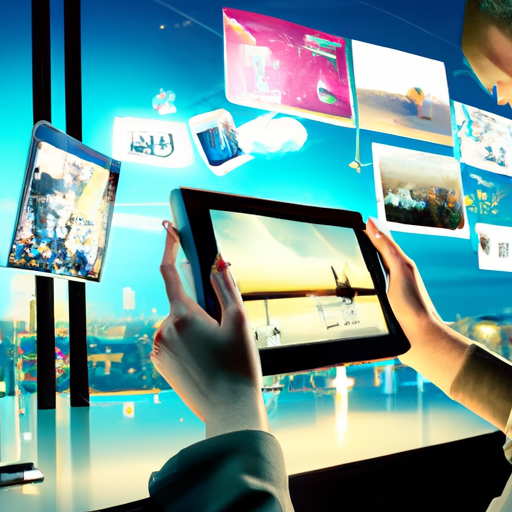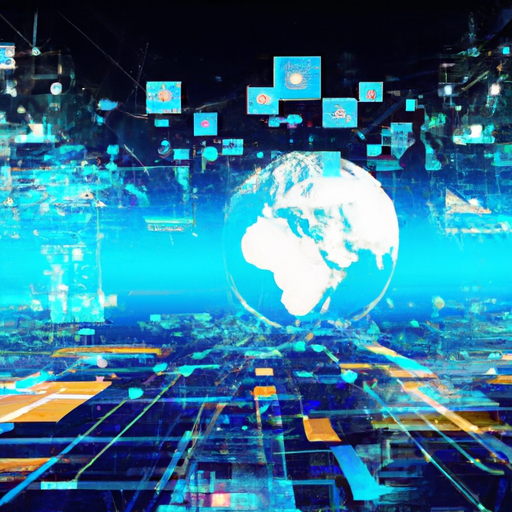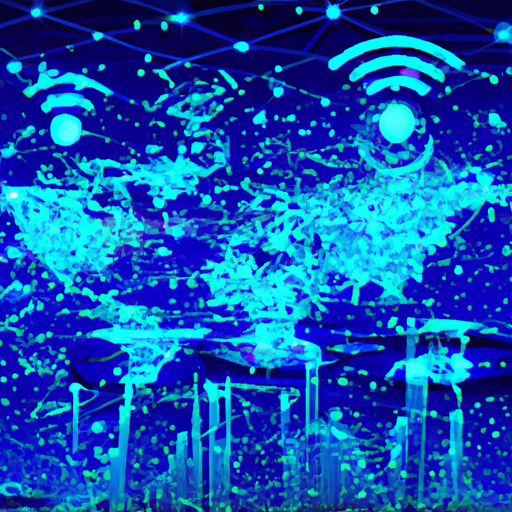Consumer Electronics Trends
If you’re someone who loves staying up-to-date with the latest gadgets and tech innovations, then this article is right up your alley. We’re here to give you a quick rundown of the current consumer electronics trends that are taking the world by storm. From cutting-edge smartphones to futuristic smart home devices, we’ll explore the exciting developments that are shaping the future of technology. So buckle up, because we’re about to take you on a whirlwind tour of the hottest trends in consumer electronics!
Table of Contents
1. Integration of Artificial Intelligence
Artificial Intelligence (AI) has become an integral part of our lives, revolutionizing the way we interact with technology. From voice assistants to smart home automation, AI is shaping the future of consumer electronics.
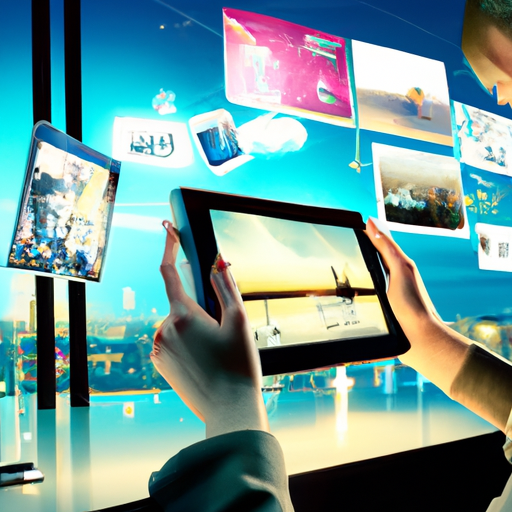
1.1 Voice Assistants
Voice assistants have gained immense popularity in recent years, transforming the way we carry out everyday tasks. With the ability to understand natural language and respond accordingly, voice assistants like Amazon’s Alexa, Apple’s Siri, and Google Assistant have become our personal virtual assistants.
These voice assistants can perform a wide range of functions, such as answering questions, providing weather updates, setting reminders, playing music, and controlling smart home devices. They have made our lives more convenient and efficient, allowing us to multitask and access information with just our voice.
1.2 Smart Home Automation
The integration of AI in smart home automation has made our homes smarter and more efficient. With the help of AI-powered devices and sensors, we can control various aspects of our homes, such as lighting, temperature, security systems, and appliances, with just a few taps on our smartphones or through voice commands.
AI allows these devices to learn from our behavior and preferences, creating personalized experiences tailored to our needs. For example, a smart thermostat can learn our temperature preferences and adjust accordingly, saving energy and improving comfort.
1.3 Personalized User Experience
AI has enabled a personalized user experience across various consumer electronics devices. By analyzing user data and behavior, AI algorithms can deliver customized content, recommendations, and suggestions.
Streaming services like Netflix and Spotify use AI algorithms to analyze users’ viewing and listening habits to recommend relevant movies, TV shows, and songs. E-commerce platforms like Amazon use AI to suggest products based on previous purchases and browsing history.
This personalized user experience not only enhances customer satisfaction but also enables businesses to provide targeted marketing campaigns and improve overall customer loyalty.
2. Internet of Things (IoT)
IoT refers to the network of interconnected devices that communicate with each other to exchange data. This network of devices has revolutionized several aspects of our lives, from connected devices to home automation.
2.1 Connected Devices
The proliferation of connected devices has transformed the way we interact with technology. Smartphones, smartwatches, smart TVs, and even smart appliances are part of this interconnected ecosystem.
Connected devices gather data from the surrounding environment and share it with other devices, allowing for seamless communication and automation. For example, a fitness tracker can sync with a smartphone to monitor your heart rate and steps taken and provide personalized health recommendations.
2.2 Home Automation
IoT has brought significant advancements in home automation, allowing us to control and monitor our homes remotely. Through connected devices like smart thermostats, smart locks, and smart security systems, we can optimize energy usage, enhance security, and improve overall convenience.
For instance, a smart home security system can send real-time alerts to our smartphones if any suspicious activity is detected. We can also remotely control the lights and appliances, making it appear as if someone is at home even when we’re away.
2.3 Wearable Technology
Wearable technology has become increasingly popular, thanks to IoT. These devices, like Fitness trackers and smartwatches, offer a range of features that go beyond just telling time or tracking steps.
Wearable devices collect data on various aspects of our health and fitness, such as heart rate, sleep patterns, and calorie expenditure. This data can then be analyzed to provide personalized recommendations, helping us make informed decisions about our well-being.
Furthermore, wearable technology has extended beyond fitness to other sectors, such as healthcare. Smartwatches with built-in heart rate monitors and GPS capabilities allow for remote patient monitoring and emergency notifications.
3. 5G Connectivity
The introduction of 5G technology has ushered in a new era of connectivity, promising faster data speeds and improved network performance. This advancement is set to impact various sectors, including consumer electronics.
3.1 Faster Data Speeds
5G connectivity offers significantly faster data speeds compared to its predecessor, 4G. With download speeds of up to 10 Gbps, streaming high-quality content, downloading large files, and online gaming will become more seamless and lag-free.
This increased speed will also benefit emerging technologies like virtual reality (VR) and augmented reality (AR), which require large amounts of data to be transmitted in real-time for an immersive experience.
3.2 Enhanced Mobile Experience
5G connectivity will enhance the overall mobile experience, enabling faster browsing, quicker app downloads, and smoother video streaming. This will lead to a more responsive and enjoyable user experience.
Tasks that were traditionally time-consuming, such as uploading and downloading large files or streaming high-definition videos, will become faster and more efficient, allowing users to accomplish more within a shorter span of time.
3.3 Improved IoT Integration
The introduction of 5G will enable improved integration of IoT devices by providing a more reliable and stable network connection. This is particularly crucial for applications that require low latency and real-time data exchange, such as autonomous vehicles and remote monitoring systems.
With 5G connectivity, IoT devices can communicate with each other faster and more efficiently, enabling new possibilities for automation and control. For example, smart cities can utilize 5G networks to enhance public services, improve traffic management, and optimize energy usage.
4. Virtual and Augmented Reality
Virtual Reality (VR) and Augmented Reality (AR) have gained significant traction in recent years, offering immersive and interactive experiences across various industries.
4.1 Gaming and Entertainment
One of the most prominent applications of VR and AR is in the gaming and entertainment industry. VR headsets and AR-enabled smartphones offer a more immersive and engaging gaming experience, transporting players to virtual worlds and blurring the lines between the real and digital realms.
Gaming consoles like PlayStation VR and Oculus Rift have introduced a new dimension to gaming, allowing players to physically interact with their virtual surroundings. AR games like Pokemon Go have also gained immense popularity, blending digital characters with real-world environments.
4.2 Training and Education
VR and AR have revolutionized training and education by providing realistic and interactive learning experiences. These technologies allow students to explore complex concepts and scenarios in a safe and controlled environment, enhancing their understanding and skills.
For instance, medical students can practice surgeries in virtual operating rooms, pilots can simulate flight scenarios, and architects can visualize and modify architectural designs in real-time. These applications of VR and AR have the potential to revolutionize traditional learning methods.
4.3 Healthcare and Therapy
VR and AR have also found applications in healthcare and therapy, offering innovative solutions for patient care and treatment. VR technologies have been utilized for pain management, anxiety reduction, and rehabilitation exercises, providing a non-pharmacological approach to healing.
For example, VR is being used to distract patients during painful procedures or assist in the treatment of phobias and post-traumatic stress disorder (PTSD). The immersive nature of VR creates a sense of presence that can help patients cope with pain and stress.
5. Smart Home Technology
Smart home technology has gained tremendous popularity, transforming our houses into highly connected and efficient living spaces.
5.1 Home Security Systems
Smart home security systems have become a crucial aspect of modern living, offering enhanced protection and peace of mind. These systems combine various technologies such as sensors, cameras, and alarms to provide comprehensive security solutions.
Smart security cameras can be accessed remotely, allowing us to monitor our homes in real-time from anywhere. Motion sensors and door/window sensors can trigger alerts and notifications, ensuring that any unusual activity is detected promptly.
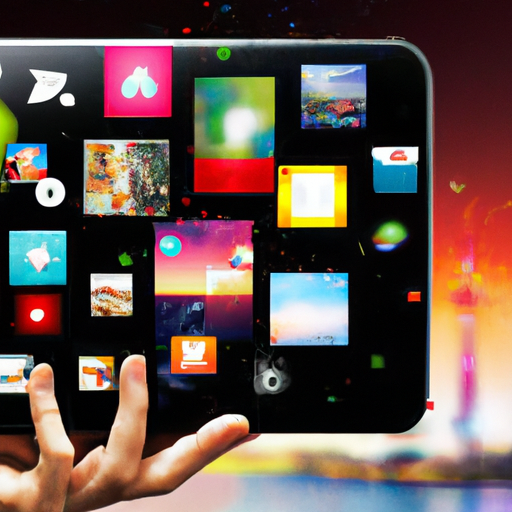
5.2 Energy Efficiency
Smart home technology has also made significant strides in energy efficiency, offering opportunities for reduced energy consumption and cost savings. Connected devices like smart thermostats, smart lighting, and smart appliances can be programmed and controlled to optimize energy usage.
For instance, a smart thermostat can learn our temperature preferences and adjust automatically, reducing energy waste. Smart lighting systems can be set to turn off when no one is in the room, minimizing electricity usage.
5.3 Remote Monitoring and Control
Smart home technology enables remote monitoring and control of various aspects of our homes. We can use smartphone apps or voice commands to control lighting, heating, cooling, and even appliances.
This remote access provides convenience and flexibility, allowing us to make adjustments and monitor our homes even when we’re away. For example, we can turn on the lights and adjust the temperature before arriving home, ensuring a comfortable environment.
6. Sustainable and Eco-Friendly Electronics
In recent years, there has been a growing emphasis on sustainable and eco-friendly electronics, driven by concerns about environmental impact and resource conservation.
6.1 Energy-efficient Devices
Energy efficiency has become a key consideration in consumer electronics. Manufacturers are incorporating energy-saving features and technologies into devices, such as low-power modes, automatic power-off, and energy-efficient components.
Energy-efficient devices not only contribute to reducing greenhouse gas emissions but also help consumers save on energy costs. As consumers become more conscious of their environmental footprint, the demand for energy-efficient electronics continues to grow.
6.2 Recycling Initiatives
The electronics industry has recognized the importance of responsible e-waste management and has implemented recycling initiatives to reduce electronic waste. Many manufacturers offer recycling programs for their products, allowing consumers to responsibly dispose of their old devices.
Additionally, governments and non-profit organizations have implemented regulations and awareness campaigns to promote recycling and proper e-waste disposal. Recycling initiatives help minimize the environmental impact of consumer electronics and ensure the recovery of valuable resources.
6.3 Green Packaging Solutions
The packaging of consumer electronics has also seen advancements in sustainability. Companies are adopting eco-friendly packaging materials, such as biodegradable plastics and recycled paper, to reduce waste and minimize the use of non-renewable resources.
Furthermore, efforts are being made to reduce excess packaging and use more compact designs, reducing the overall carbon footprint associated with transportation and storage.
7. Biometric Authentication
Biometric authentication has gained popularity as a secure and convenient method of identity verification. Biometric technologies utilize unique physical or behavioral characteristics to verify individuals’ identities, offering enhanced security compared to traditional passwords.
7.1 Fingerprint Scanners
Fingerprint scanners are one of the most widely adopted biometric authentication methods. By analyzing the unique patterns of our fingerprints, these scanners can accurately verify and authenticate our identities.
Smartphones, laptops, and even door locks now feature integrated fingerprint scanners, allowing for quick and secure unlocking and access control. The convenience and reliability of fingerprint scanners have made them a popular choice for device security.
7.2 Facial Recognition
Facial recognition technology has made significant advancements in recent years, offering highly accurate and efficient biometric authentication. By analyzing the unique features and contours of our faces, facial recognition systems can verify our identities in real-time.
Facial recognition is now used in various applications, from unlocking smartphones to airport security and surveillance systems. The technology has proven effective in identifying individuals and enhancing security measures.
7.3 Iris Scanning
Iris scanning is another form of biometric authentication that has gained traction due to its high level of accuracy and security. By analyzing the unique patterns in our irises, iris scanners can accurately verify our identities, even in low light conditions.
Iris scanners have found applications in access control systems, border security, and even healthcare. The non-contact nature of iris scanning makes it hygienic and suitable for use in high-security environments.
8. Advancements in Display Technology
Display technology has undergone significant advancements, enabling more immersive and visually stunning experiences.
8.1 OLED and QLED Displays
OLED (Organic Light Emitting Diode) and QLED (Quantum Dot Light Emitting Diode) displays have become increasingly popular in consumer electronics. These display technologies offer vibrant colors, deeper blacks, and wider viewing angles compared to traditional LCD displays.
OLED displays use organic compounds that emit light when an electric current is passed through them, resulting in high contrast ratios and pixel-level control of brightness. QLED displays, on the other hand, use quantum dots, tiny semiconductor particles that emit different colors of light when stimulated by an electric current.
8.2 Foldable and Flexible Screens
Foldable and flexible screens have made their way into the consumer electronics market, offering new possibilities for device design and user experiences. These screens utilize advanced materials and technologies that allow them to be folded or bent without compromising display quality.
Foldable smartphones, like the Samsung Galaxy Fold and the Motorola Razr, offer larger displays that can be folded to a more compact size for convenience. Flexible displays are also being explored in wearables and other devices, allowing for creative and innovative designs.
8.3 High-Resolution and HDR
High-resolution displays have become the norm in consumer electronics, with 4K and 8K resolutions offering incredibly detailed and lifelike visuals. These displays have become more affordable and accessible, enhancing the viewing experience of movies, TV shows, and games.
Additionally, High Dynamic Range (HDR) technology has gained popularity for its ability to display a wider range of colors and brightness levels. HDR displays provide more realistic and vibrant visuals, with improved contrast and better color accuracy.
9. Wireless Charging Technology
With the increasing number of devices we use on a daily basis, the demand for convenient and hassle-free charging solutions has grown. Wireless charging technology has emerged as a solution, allowing devices to be charged without the need for cables.
9.1 Qi Standard
The Qi (pronounced “chee”) standard is the most widely adopted wireless charging standard. Qi-enabled devices, such as smartphones and smartwatches, can be charged by simply placing them on a Qi-compatible charging pad or surface.
Wireless charging provides convenience and eliminates the clutter of cables, making it easier to charge devices at home, in the office, or even in public spaces. The technology is continuously evolving, with advancements in charging speeds and the ability to charge multiple devices simultaneously.
9.2 Increased Adoption
Wireless charging technology is being integrated into an increasing number of consumer electronics devices. Smartphones from major manufacturers like Apple and Samsung now feature wireless charging capabilities, making it a standard feature in flagship devices.
Furthermore, wireless charging is being integrated into other devices like headphones, smartwatches, and even furniture. This increased adoption indicates the growing acceptance and popularity of wireless charging technology.
9.3 Long-Range Charging
Long-range wireless charging is an emerging technology that aims to provide charging capabilities over longer distances. This technology would enable devices to charge without the need for direct contact with a charging pad or surface.
Long-range wireless charging utilizes technologies like resonant inductive coupling and radio frequency energy harvesting to transmit power wirelessly. While still in the early stages of development, this technology has the potential to revolutionize the way we think about charging our devices.
10. E-commerce and Direct-to-Consumer Sales
E-commerce and direct-to-consumer (D2C) sales have experienced significant growth, offering consumers a convenient and personalized shopping experience.
10.1 Online Marketplaces
Online marketplaces like Amazon and Alibaba have revolutionized the way we shop for consumer electronics and other products. These platforms offer a vast selection of products from various sellers, allowing us to compare prices, read reviews, and make informed purchasing decisions.
Online marketplaces also offer the convenience of doorstep delivery, saving us time and effort. With same-day or next-day delivery options becoming more common, consumers can receive their purchased items without delays.
10.2 Customized Product Offering
D2C sales have enabled companies to offer customized product options tailored to individual preferences. By cutting out intermediaries, companies can gather information directly from consumers and create personalized product offerings.
For example, companies like Nike and Casper offer customizable options for shoes and mattresses, respectively. Customers can select their preferred colors, materials, and features, creating a product that meets their exact needs.
10.3 Disruption of Traditional Retail
The rise of e-commerce and D2C sales has disrupted traditional retail models. Brick-and-mortar stores now face significant challenges in competing with the convenience and accessibility offered by online platforms.
To adapt, many retailers are incorporating online channels, offering omnichannel experiences that integrate physical stores with e-commerce platforms. This allows consumers to research products online and make purchases either in-store or online, based on their preferences.
In conclusion, the integration of artificial intelligence, advancements in display technology, the rise of IoT and 5G connectivity, the emergence of virtual and augmented reality, the growth of smart home technology, the focus on sustainability, the adoption of biometric authentication, the development of wireless charging, and the evolution of e-commerce and direct-to-consumer sales are transforming the consumer electronics landscape. These trends are reshaping the way we interact with technology, enhancing convenience, efficiency, and personalization in our daily lives.
